Yama Farms Inn: A Home in the Mountains


Trout, Champagne, and Maple Syrup
The property that would become Yama-no-uchi contained a small trout preserve when Seaman first purchased it. Typically, by the time Seaman was done with his “improvements,” the site he called “the fish ponds” had been transformed into a world class trout hatchery. While at Cornell, Seaman attended lectures on fish culture. Here he was inspired to to develop his own trout hatchery. Not content to be a mere breeder of fish, Seaman characteristically set out to apply “the Darwinian theory and the Mendelian principle” to his five ponds filled with brook trout. He told his professor “…I’m going to see if it isn’t possible to materially increase the size of the fish and the number of eggs of those fish.” Before long Seaman was the owner of one of the most successful trout hatcheries in the eastern United States. Due to a special diet that included finely ground lamb hearts, the Yama trout were said to taste as if they were caught “in the wilds of Canada.” Seaman was soon supplying the Waldorf Astoria where diners could select their own trout from a special glass tank. In addition to the original Yama-no-uchi trout ponds—which he had rapidly converted into a state of the art trout hatchery—Seaman developed a second hatchery at a nearby stream known as the Jenny Brook, on property he had purchased in 1914. John Burroughs, who had written several essays on trout fishing, remarked of the Yama Farms hatcheries:
“I lost my heart to Jenny Brook,
I think she took it with a hook.”


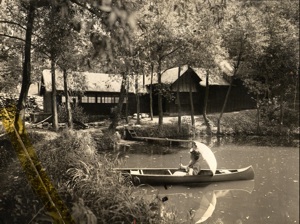
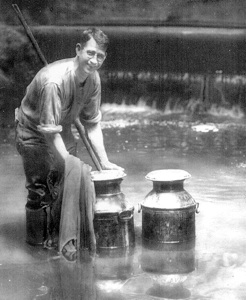
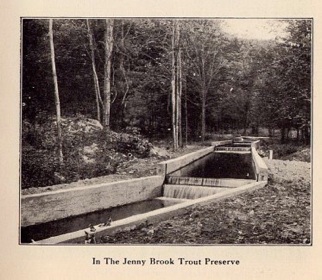
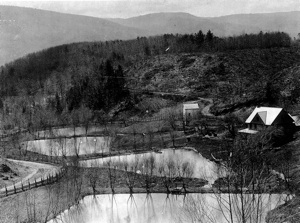

“I always feel at home where the maple grows,” John Burroughs once wrote. Maple syrup tapped from Yama Farms own maples and processed on the grounds was a favorite among the guests. As part of Burroughs’ 83rd birthday celebration on April 3, 1920 he presided over “sugaring-off” at the Inn. Olive Brown Sarre stands besides him.
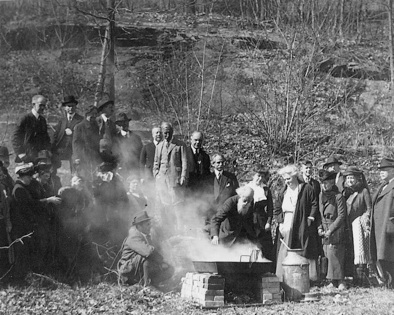
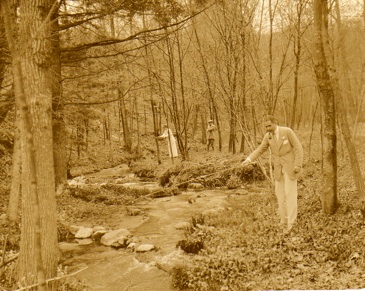
The property that would become Yama-no-uchi already contained a trout preserve when Frank Seaman purchased it in 1903. He then developed his own world class hatchery on the site.
A guest admires one of the Japanese-inspired hatchery structures
Chief Peter, of the Nova Scotia Mi’kmaq, was a skilled trout and salmon fisherman. Shown here with Olive Brown Sarre, he was often in residence at the Jenny Brook fishing camp (the site of Seaman’s second trout hatchery), where he provided instruction and assistance to the guests.
The Jenny Brook hatchery was located a short walk away from the Inn. In addition to producing all the fresh trout the guests could eat, the two hatcheries also supplied New York City hotels, including the Waldorf Astoria.
Allen Townsend, the hatchery manager, was considered one of the best fish culturalists in the the country.
Yama Farms guests (perhaps recently trained by Chief Peter) trying their luck on the Jenny Brook.
The “camp” boasted an outdoors kitchen with a resident chef (above) who was available to prepare freshly caught trout or anything else the guests might want, at any time of day. Photo at Left Courtesy of Kathy Strasser.
Prohibition affected Yama Farms only slightly. Since the Inn had never charged for its alcohol, and the Prohibition laws permitted home consumption, Seaman simply dropped cocktails from the drink list and added a French champagne maker to the staff. Champagne and wine produced on the grounds continued to flow freely throughout the 1920s. Evidence of Seaman’s ingenuity can still be seen in the form of the faded lettering on the doorway at right.
